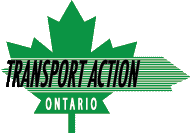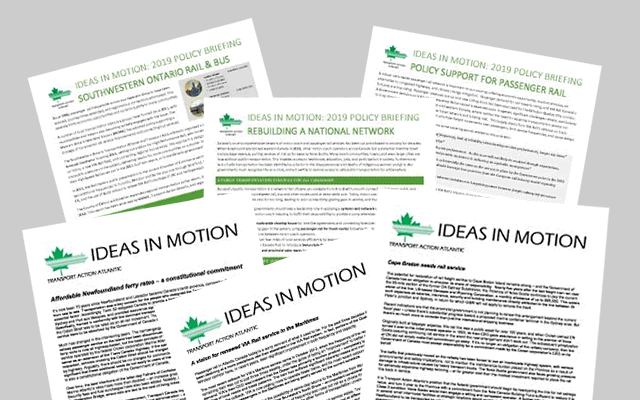By
Transport Action Ontario
|
Intercity Rail and Bus ,
Southwestern Ontario
Transport Action Ontario long-time member Ken Westcar has published an op-ed in the Stratford Beacon Herald on October 2, 2019 outlining a practical vision to improving passenger rail service in Southwestern Ontario. The article is reproduced below:
By international standards, Stratford’s railway station is a rather sad place. Casual observers see it as a rather quaint reminder of the past. Nevertheless, the colourful flower baskets in summertime and general tidiness of the place provide some hope for a brighter future.
And perhaps that future is hiding in plain sight.
Municipal politicians and passenger rail advocates from Kitchener to London have been quite vocal on the role this underutilized rail corridor could play in a transportation plan for Southwestern Ontario, given the predicted 15 to 30 per cent population growth projected in the region between 2017 and 2041. Add the Ministry of Transportation’s ongoing travails on widening Highway 7/8 through Shakespeare to four lanes, and it’s easy to understand why there’s shared public interest in bringing better passenger rail services to Stratford and beyond.
However, past efforts by passenger rail supporters in engaging with senior levels of government have been akin to punching a cloud. Responses, if any, are dismissive and show an unwillingness to engage in meaningful discussion. Several years ago, Via Rail made a vague commitment to consider additional services, but nothing happened. Then the last Liberal provincial government touted the ill-conceived idea of high-speed rail project that would bypass Stratford entirely and spell the final demise of the city’s once proud railway history.
While it’s understood the implementation of a new rail passenger rail service or the improvement of an existing one is quite complex, it needs to be recognized at both the federal and provincial levels that it’s a critical part of the future mobility matrix. It’s not just about moving people from A to B, but more about social progress through connectivity, wellness and care of our environment.
This corridor is also served by highways that are increasingly unreliable, congested and a major source of air and water pollution. Ongoing improvements to the Highway 7/8-Highway 401 interchange near Kitchener may make the travel situation worse over time, not better. Relentless car-dependent urban sprawl guarantees it. For this very reason, the Ontario Chamber of Commerce has been unequivocal in its support of expanded rail transportation across the province.
The planned all-day, two-way GO train services to Kitchener should incorporate the concept of westward extension to London and perhaps Sarnia on existing and upgraded rail infrastructure. Better use of what already exists makes service improvement affordable to taxpayers and quicker to deliver. It has much lower risk and is expandable.
Several operational and funding ideas have emerged from local discussions:
- Terminate bi-level GO trains in Kitchener and provide cross-platform connection to regional rail services to London with stops that encourage transit-oriented development.
- Employ European-style, single-level, multiple-unit trains that are less costly to operate on regional lines.
- Low, platform-level loading for quick and accessible boarding and a single or two-person crew.
- Presto or contactless fare payment to encourage ridership.
- Sponsorship of stations by local municipalities and businesses (St. Marys station is already municipally owned).
- A new London international airport station to provide an intermodal connection and induce rail passenger demand. (It is understood a low-cost airline is considering expansion in London with up to 250,000 passengers annually). This station and airport parking facilities could also serve rapid urban growth to the east of London.
A collaborative approach between stakeholders could make this project financially viable and sustainable if a broad view of the social and economic benefits is considered.
But opposition to passenger rail expansion often trumpets the public subsidy issue. This must be tempered by the fact that, according to the C.D. Howe Institute, a Canadian think tank, the average public subsidy for highways in Canada is 30 per cent and growing. In other words, fuel taxes and licensing fees cover less than 70 per cent of the cost of building and maintaining our roads. And it doesn’t include the unquantifiable externalities of air and water pollution and their growing burden on public health budgets.
Good highways will always be part of Southwestern Ontario’s transportation system, but making them the default option for public investment will almost certainly put us on the wrong side of history. Growing concerns over carbon emissions, rapidly escalating congestion in the Greater Toronto Area-Hamilton area, an aging population and increasing focus on wellness as a measure of economic and social success requires us to think differently about personal transportation.
The solution is, indeed, in plain sight. Politicians and planners need to park their preconceived ideas and listen to what the public is saying. This is why the Liberal-sponsored Toronto to London high-speed rail project is on ice. It was a solution looking for a problem. Stratford station epitomizes a problem, a solution and an opportunity. Time to open our eyes.








You must be logged in to post a comment.